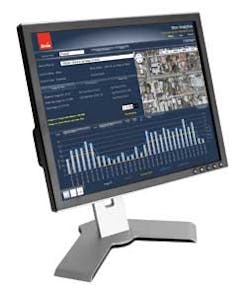Turning Data into Decisions: How Analytics Can Help Make the Most of Meter Data
By Mike Scarpelli
Meter data is highly abundant, and while smarter technologies give utilities access to more granular information, many plants are struggling to make the most of it. According to the 2013 Itron Resourcefulness Index, only 46% of utility executives feel prepared to manage big data today, though 74% feel that big data insights are central to infrastructure modernization efforts.
Data and analytics play an important role in helping utilities overcome the many business challenges they face, from commodity supply and price pressures to rising operational costs. On top of that, water utilities must balance the need to replace aging infrastructure and mitigate water losses in their distribution systems.
With analytics tools, such as Itron Analytics, utilities can use the collected data to improve decision making and overcome these challenges. They can improve customer service, engage consumers, detect non-revenue water, evaluate conservation programs, protect revenue, forecast demand, and more.
Improving Customer Service
With easy access to detailed daily and hourly consumption data in an analytics application, customer service representatives (CSR) are able to explain unusual consumption patterns to concerned customers. For example, if an end-user calls with a complaint about a high bill, the CSR can review his/her daily and hourly usage to check for any unusual usage patterns. If there is a spike at a certain period, this could help the end-user to remember, for example, that they had filled their pool or watered their yard. This results in reduced call times, improved operational efficiency and increased customer satisfaction because resolutions are based on tangible data.
Engaging Consumers
Data is no longer limited within the four walls of the utility but can be made available to all consumers via a web portal or smart mobile devices. These tools give consumers greater control over their own consumption and help them set goals and answer questions about their own consumption.
Detecting Non-Revenue Water
The U.S. Energy Information Agency indicated 34% of treated water is lost or unaccounted for globally. The need to prevent non-revenue water losses and protect water resources is essential. With the help of analytics, plants can correlate data to detect potential leaks. One approach is district metering analysis, involving comparing the total amount of water pumped into a pressure zone or district (through a "master meter") to the simultaneous total aggregated amount of water metered out of the pressure zone or district (through the aggregated "district"). Utilities can also look for continuous-use, which could mean a leak on the customer side.
Evaluating Conservation Programs
By grouping and aggregating various control and active groups, utilities can use data and analytics to measure the effectiveness of a given conservation program against a control group or competing conservation initiative.
Protecting Revenue
Using analytics to correlate events such as tampers, non-usage periods and reverse flows into detectable, repeating patterns for a given account can be a powerful method to detect potential theft or other unauthorized usage.
Forecasting and Meeting Increasing Demand
Analytics can help utilities determine where to invest for future growth and demand. Metering data can be used for linear regression and forecasting purposes. Such data is also ideal for use in hydraulic load modeling software that calibrates mathematical models according to actual consumption.
Conclusion
Water utilities are facing non-revenue water, increasing demand and timely revenue collection. Fortunately, new and affordable analytic tools turn data into actionable intelligence, enabling plants to quickly and accurately address these issues in an ongoing and sustainable way.
About the Author: Mike Scarpelli is the director of product marketing for water hardare solutions at Itron. He is responsible for water endpoint products and solutions, including AMR/AMI and leak detection products for North America.
Itron is exhibiting at AWWA's ACE14 expo in Booth 1806.

